New Martin Scorsese film showcases the lighter side of Bob Dylan
In 1975, Bob Dylan led the all-star rock band on his most unconventional tour.
And now, for something completely different from Bob Dylan.
The new, experimental quasi-documentary film, “Rolling Thunder Revue: A Bob Dylan Story by Martin Scorsese,” that premieres this week on Netflix is -- to quote the Kris Kristofferson song -- a “walking contradiction, partly truth and partly fiction” -- much like the artist himself.
It’s an unexpectedly hilarious romp through Dylan’s brief but fabled 1975 fall tour, when he led an all-star rock band through the back alleys of an economically-battered New England, playing odd venues on short notice in out-of-the-way American towns: a Mahjong hall at an off-season seaside resort, a Native American reservation, an upstate New York prison, a musical pilgrimage to the New England grave site of writer Jack Kerouac.
They land first, like the first pilgrims themselves, in Plymouth, Massachusetts.
What’s so unexpected is how gleefully -- and mischievously -- it presents a far more light-hearted and joyful side of Dylan than has ever really surfaced on film before -- both in the original 1975 tour footage and in amusing new interviews Dylan conducted for the documentary.
After a lifetime complaining about being mythologized beyond all reason, Dylan and Scorsese have turned the tables on his fans and pranked them in this film with some brilliant fictional appearances slipped in for such sly comic effect that they go unnoticed unless you’re watching vigilantly.
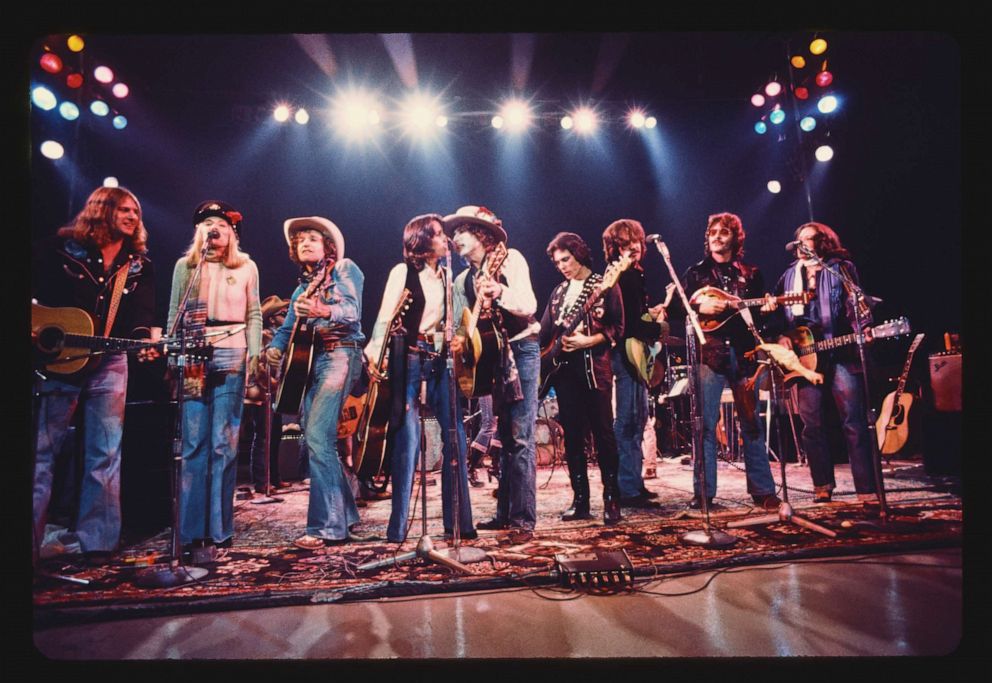
At a premiere screening this week at the Museum of Fine Arts in Houston, Texas, the sold-out audience erupted in laughter at regular intervals throughout the carnivalesque two hour and 22-minute film, which Netflix bills as Scorsese’s “alchemic mix of fact and fantasy.”
The “Rolling Thunder” tour film also unearths bracing new renditions of “Isis,” “One More Cup of Coffee,” “Romance in Durango,” “Simple Twist of Fate,” “The Lonesome Death of Hattie Carroll,” “When I Paint My Masterpiece” and others.
One of the film’s high points is a stunning, new concert version of “Hurricane,” Dylan's blistering and controversial indictment of racial discrimination in the U.S. criminal justice system about the triple-murder conviction of Rubin “Hurricane” Carter, a colorful New Jersey boxer who features prominently in interviews in the film.
Based in part on activism by Dylan, boxer Muhammed Ali and others, Carter's conviction was overturned by New Jersey's Supreme Court in 1976, but he was retried and reconvicted by state prosecutors before his eventual release in 1985.
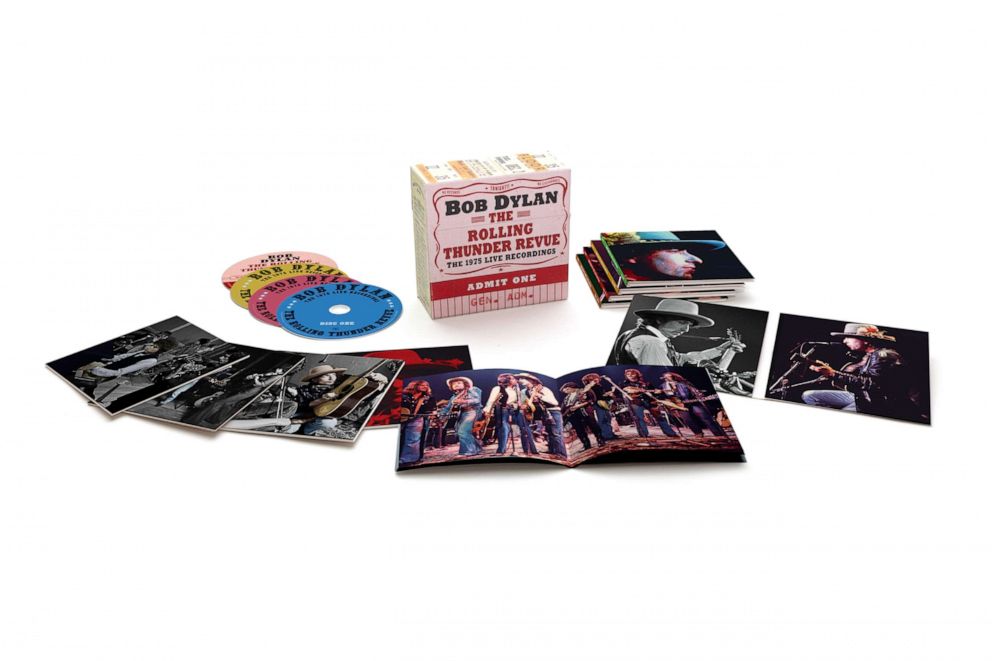
Accompanying the film’s release is an extensive new 14-disc box set from Sony that captures five full concerts from that fall 1975 tour, as well as scores of rehearsals, local radio ads and other nostalgic gems from that long-lost age. Some of the new, live versions of songs from “Desire,” “Blood on the Tracks” and others culled from Dylan’s back catalog are the best versions released to date.
'The elements I work best in'
It seems the time is right for America to see another side of Bob Dylan.
Dylan’s most notable recent cameos in the mainstream press -- his cantankerous 2004 “60 Minutes” interview with Ed Bradley; his exquisitely slow response two years ago to being named rock’s lone Nobel laureate -- have left the legitimate impression among most Americans of a stern, rather humorless elder statesmen.
That same impression was left by the appropriately serious tone of “No Direction Home,” Scorsese’s seminal 2005 look at Dylan’s meteoric early years which culminated in a 1966 motorcycle crash that presaged an eight-year hiatus from touring.
But then Dylan re-emerged in 1974 for a triumphant, barnstorming stadium tour with The Band that resulted in his double live album that year, “Before the Flood,” and by the summer of 1975, he seemed to be in his finest touring form yet.
In January of that year, he had released his undisputed masterpiece, “Blood on the Tracks,” and had already completed recording on his still-unreleased follow up album, “Desire” when he set out on the most unconventional tour of his career - the Rolling Thunder Revue.
The film captures this much-written-about but seldom seen period in his career when the 34-year-old artist was brimming with energy, full of some of the freshest and most original material he’d ever produced, and surrounded by a small galaxy of friends, colleagues, old girlfriends, cartoonish rock reporters, fictional directors and other thoroughly colorful oddballs.
“It’s just the elements I work best in,” Dylan intones in the film.
The tour featured “Howl” poet Allen Ginsberg reciting poetry, Joan Baez playing her own sets and also singing with Dylan in some of the most mesmerizing performances in the film, and the hard-rocking supergroup backing band dubbed “Guam” -- which contained the likes of T-Bone Burnett, David Bowie guitarist Mick Ronson, pedal steel guitarist Dave Mansfield, bassist Rob Stoner, Ramblin’ Jack Elliott and Byrd Roger McGuinn, among many others.
Joni Mitchell turns up at a Connecticut show and joins the tour. She’s captured in the film testing out a new song, “Coyote,” in Gordon Lightfoot’s Canadian home while McGuinn and Dylan strum along, trying to keep up.
An unlikely breakout star of the film is actress Sharon Stone, who may or may not have ended up on the tour as a shy, teen-aged aspiring starlet. Given the unorthodox nature of this film, it’s hard to tell whether her improbably hilarious Dylan stories really happened or not -- but they were rolling in the aisles in Houston.
Other stars of the film are Baez, Ginsberg, Carter, former Ronnie and The Hawks front man Ronnie Hawkins, and a theatrically-pompous fictional Dutch director named Stefan van Dorp, whose outsized ego manages to cleverly send up Dylan while matching the artist in laughter-inducing punch lines across the span of the film.
"Van Dorp was an unusual guy," Dylan claims in a new interview. "He was the one of those kind of people who kind of just needs an enemy, and he was trying to make enemies where there weren't any."
"He angered a lot of people, especially catering," Dylan explains in a deadpan tone.
"He would eat two or three meals that really were for somebody else. So he ate more than he was supposed to, and I think he stuck his nose in places he should not have been. He was also a very paranoid person, and was claiming that his room was bugged."
"But, ah, you know McGuinn was on that tour," Dylan continues, seeming to strain to recall the details of the fictional Van Dorp's role in Dylan's real 1975 tour.
"And McGuinn was, at that time, was into very sophisticated electronics, so I'm not saying it wasn't bugged, but I'm not saying it was bugged because I don't know that for a fact."
Riotous laughter in Houston.
It's virtually impossible to tell -- in this and other amusing segments -- that Dylan's putting his viewers on.
‘Couple a what?’
For the notoriously-guarded Dylan, even just talking about the (actual) aspects of that wild, experimental period seemed to soften up the now 78-year-old artist.
He comes across more tender and humbled than ever before in recalling his real-life collaborations with -- and love and admiration for -- Baez, with whom he had a stormy, storied love affair and friendship in the early 1960s.
No one was more responsible at the start of Dylan career for introducing the young folkie to a broader mainstream audience that Baez, who took him on her national 1963 tour.
And by many accounts, hers included, no one was subsequently crueler to Baez than Dylan -- an allegation hinted at in a devastating scene in the film when Dylan and Baez riff on their marriages to others.
Sadly absent from the film and the box set is Baez performing her masterful 1974 composition, “Diamonds and Rust,” one of the loveliest and most damning takedowns of Dylan ever put to vinyl.
But more than a decade has passed when they reunited in 1975. Both have seemingly moved on from their earlier relationship.
“Everything is forgiven whenever I see Bob sing,” Baez explains in a new interview in the film. “The charisma he has -- I’ve never seen before or since.”
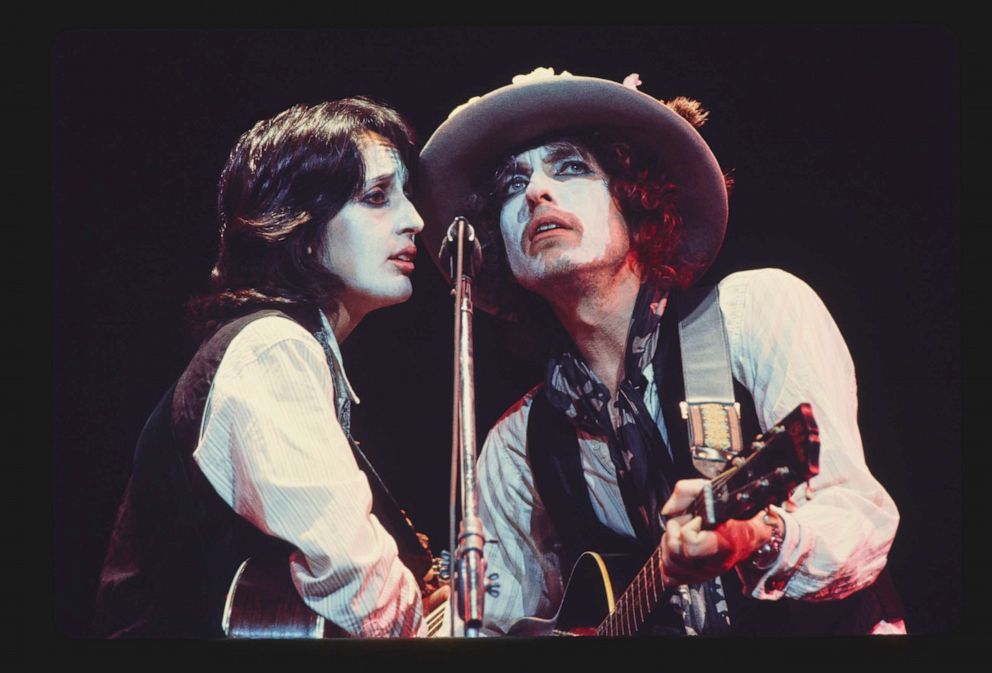
Dylan is equally sweet.
“Joan Baez and I could play together in our sleep,” he says in a new interview for the film. “As a matter of fact, a lot of times when I was sleeping, I would hear her voice.”
There are other tender moments between the two former lovers in the film.
In one really funny clip, she recalls literally masquerading as Dylan and getting some of the tour staff to believe she’s him, and then recounts how astoundingly well people treat you when you’re Bob Dylan.
The electricity between the two crackles anew when they take the stage for several duets in the film, including a powerful “Blowin’ in the Wind,” one of Dylan’s earliest hits, and his hymn-like 1968 ballad, “I Shall Be Released.”
When an audience member shouts outs, “What a lovely couple!” Dylan cracks back, “Couple a what?”
Baez repeats the line, before delivering her own grinning zinger.
“Yeah, a couple a what?”
“Don’t make myths.”
‘An incredible dancer!’
Yet that’s exactly what Dylan and Scorsese are doing here.
It’s Dylan and Scorsese’s own version of the heavy metal rock mockumentary “Spinal Tap,” which itself -- as Kyle Smith points out in the National Review -- was a spoof of Scorsese’s 1978 documentary “The Last Waltz,” about The Band’s epic, 1976 farewell concert in San Francisco - which featured -- you guessed it -- Dylan as its top-billed guest star.
It’s part fact, part prank -- leaving the viewer to wonder how much of it was real and how much of it is gleefully fictitious.
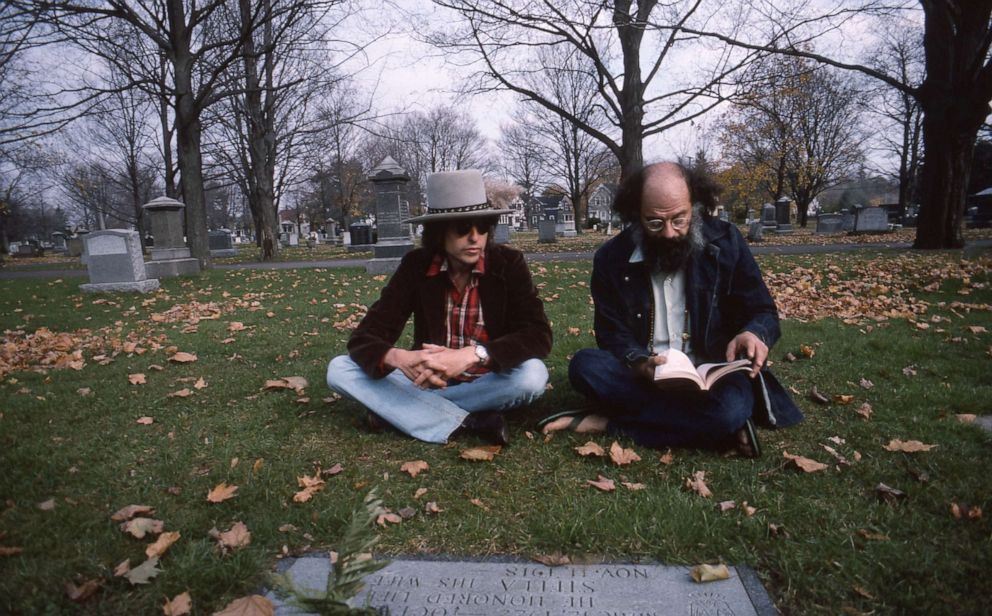
Did violinist Scarlet Rivera really travel with a live snake and numerous candelabras in her tour trunk and wear a “sword wherever she went” as a grinning Hawkins claims?
Did then-President Jimmy Carter really get a seemingly fictional congressman interviewed in the film into a Niagra Falls "Rolling Thunder" show at the last minute with a phone call to Dylan?
Attentive viewers get an early indication that something’s up when Dylan turns his attention to poet Allen Ginsberg, one of the goofiest characters ever to emerge from the 1960s counterculture.
“One thing that people don’t know about Ginsberg is that he was an incredible dancer!” Dylan deadpans in a voice-over, as archival footage rolls of Ginsberg bouncing ridiculously around an empty ballroom like a toddler trying the bunny hop for the first time.
And just wait'll you hear where Dylan now claims the idea for the "Rolling Thunder" white face mask came from.
You couldn't make this stuff up.
Or could you?
But the real revelations here are the performances. With his steely blue eyes blazing against a white face mask of paint, throat pumping out syllables in sharp, urgent stabs of breath, you almost expect to see sparks flying off the performer as he tears through a radically reshaped electric version of his acoustic classic, “A Hard Rain’s A-Gonna Fall.”
To understand the durability and elasticity of Bob Dylan’s best songs -- which is to understand the durability and elasticity of the artist himself -- simply compare his original 1963 acoustic version of “A Hard Rain’s A-Gonna Fall” from a Canadian television broadcast with the wildly-reimagined electric version from the 1975 “Rolling Thunder Revue.”
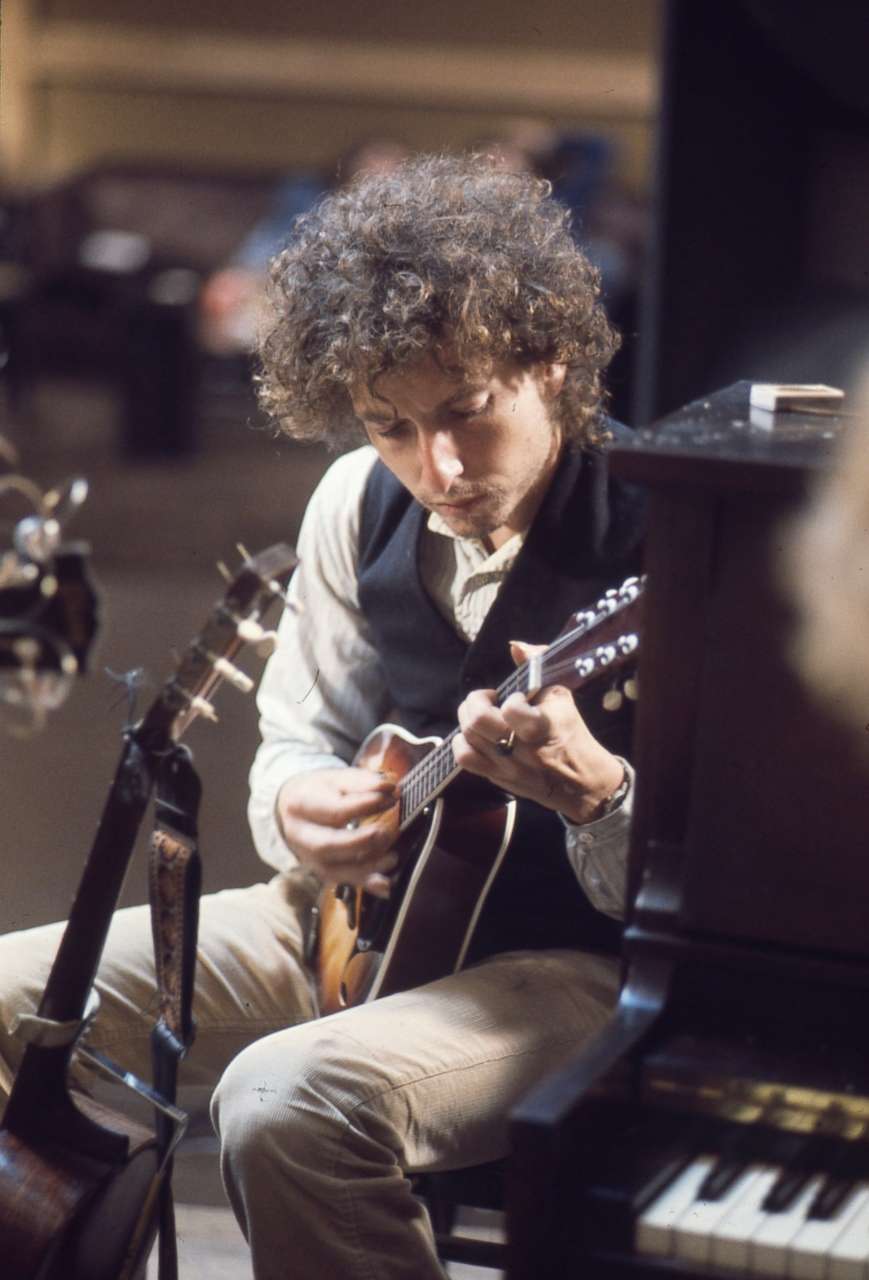
But there are parts of the film that are unmistakably the real Bob Dylan.
Tour singer Ronnee Blakley recalls asking Ronson, Bowie's guitarist, "Don't you love Bob?"
"I don't know," Ronson replies, according to Blakely. "He's never spoken to me."




